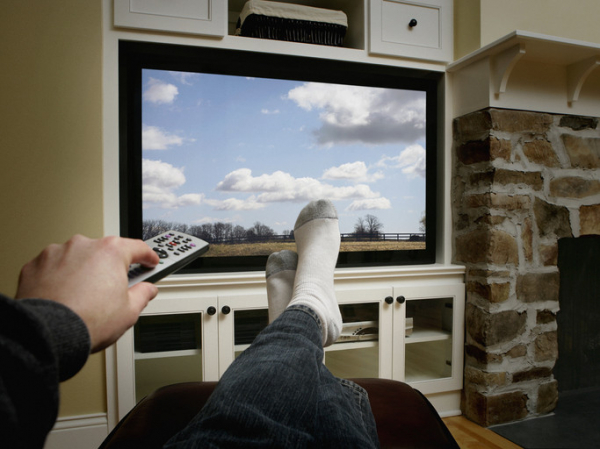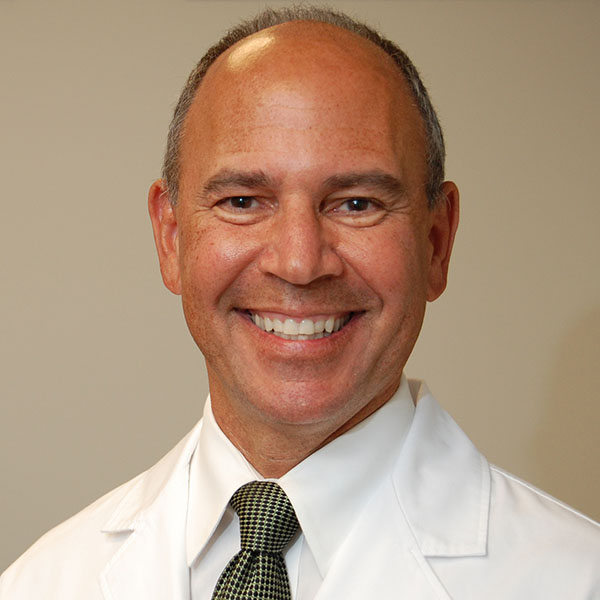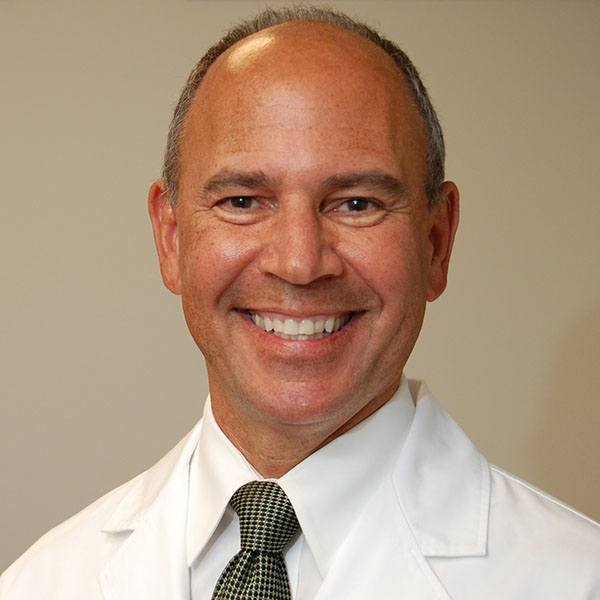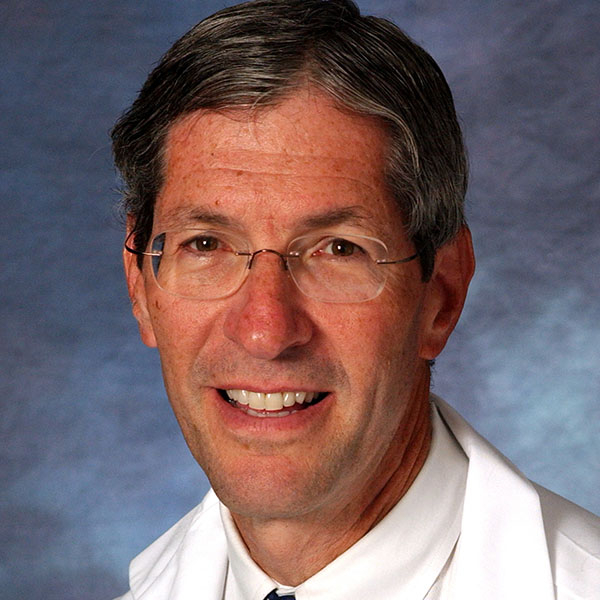
Should you be sleepmaxxing to boost health and happiness?

If you’ve been on TikTok lately, you know it’s hard to avoid countless influencers touting a concept called sleepmaxxing. Their posts provide tips and tricks to get longer, better, and more restorative sleep. And why not? Sleep is considered a pillar of good health and is related to everything from brain health to cardiovascular health, and even diabetes.
But what exactly is sleepmaxxing? And how likely is it to deliver on claims of amped-up energy, a boost to the immune system, reducing stress levels, and improving your mood?
What is sleepmaxxing?
Depending on which social media platform you happen to be looking at, the recommended strategies for maximizing sleep differ. Tips include:
- taping your mouth shut while sleeping
- not drinking anything during the two hours before bedtime
- a cold room temperature
- a dark bedroom
- using a white noise machine
- not setting a morning alarm
- showering one hour before bedtime
- eliminating caffeine
- eating kiwis before going to bed
- taking magnesium and melatonin
- using weighted blankets
- getting 30 minutes of sunlight every day
- meditating daily for 30 minutes.
Does any research support sleepmaxxing?
A thorough search through PubMed, PsycNet, and Google Scholar reveals zero results for the terms “sleepmaxx” and “sleepmaxxing.” But wait — this certainly doesn’t mean that some influencer-recommended strategies are not evidence-based, just that the concept of sleepmaxxing, as a defined package, has not been scientifically studied. But yes, some of the strategies — including one uncomfortable, though popular, choice — lack evidence.
Can mouth-taping improve your sleep?
TikTok users have claimed that taping your mouth while you sleep has benefits, such as reducing snoring and improving bad breath. A team from the department of otolaryngology at George Washington University was prompted by all of the social media buzz on the topic to review research on the impact of nocturnal mouth taping. Spoiler alert: the authors note that most TikTok mouth-taping claims aren’t supported by research.
If you do snore, it’s important to discuss this with your medical team. Even if taping your mouth reduces your snoring, it can’t effectively treat a potential underlying cause of the snoring, such as allergies, asthma, or sleep apnea.
Sleepmaxxing or basic sleep hygiene?
Many strategies recommended by sleepmaxxers are essentially what sleep experts prescribe as good sleep hygiene, which has plenty of research backing its value. Common components of sleep hygiene are decreasing caffeine and alcohol consumption, increasing physical activity, sleep timing, reducing evening light exposure, limiting daytime naps, and having a cool bedroom.
While tips like these help many people enjoy restful sleep, those who have an insomnia disorder will need more help, as described below.
Melatonin, early bedtime, weighted blankets, and — kiwi fruit?
Other strategies suggested by sleepmaxxers are based on limited scientific data. For example:
- Taking melatonin is recommended by the American Academy of Sleep Medicine to treat circadian rhythm disorders such as jet lag. But it’s not recommended for insufficient sleep, poor sleep quality, or difficulty with falling asleep or staying asleep.
- Is it healthier to be asleep by 10 p.m.? One video that garnered more than a million views claims it is. While it is important to maximize morning sunlight exposure and minimize evening light exposure to regulate circadian rhythms, there is such variability in how much sleep someone requires and individual chronotypes (not to mention varying personal and professional responsibilities!) that it is difficult to state there is an ideal bedtime for everyone.
- While intriguing research has been done on weighted blankets, there is no convincing evidence that they are truly effective for the general adult population.
- Overall, it’s important to be cautious about the impact of the placebo effect on how someone sleeps. An analysis of more than 30 studies showed that roughly 64% of the drug response for a sleep medication in insomnia patients could be due to the placebo effect. A key takeaway is that studies that are not randomized controlled trials — such as this small study on 24 people suggesting that kiwi fruit may improve sleep — should be interpreted with a grain of salt.
Could you have orthosomnia?
The expectation of flawless sleep, night in and night out, is an unrealistic goal. Orthosomnia is a term that describes an unhealthy pursuit of perfect sleep. The pressure to get perfect sleep is embedded in the sleepmaxxing culture.
With more and more people able to access daily data about their sleep and other health metrics through consumer wearables, even a person who is objectively sleeping well can become unnecessarily concerned with optimizing their sleep. While prioritizing restful sleep is commendable, setting perfection as your goal is problematic. Even good sleepers vary from night to night, experiencing less than desirable sleep a couple of times per week.
It is also noteworthy that some of the most widely viewed recommendations on TikTok are not supported by scientific evidence.
Do you really need to fix your sleep?
A good first step is to understand whether or not there is anything that you need to fix! Consider tracking your sleep for a few weeks using a sleep diary, and pair this data with a consumer wearable (such as a Fitbit or Apple Watch). Both imperfectly capture sleep data when compared to the gold-standard tool sleep experts use (polysomnography, or a sleep study). However, combining the information can give you a reasonable assessment of your sleep status.
Regularly getting restful sleep can indeed boost health and mood. And all of us can benefit from following basic sleep hygiene tips. But if it takes you 30 minutes or more to fall asleep, or if you are up for 30 minutes or more in the middle of the night, and this happens three or more times per week, then consider reaching out to your health care team to seek further evaluation.
There are effective, nonmedication treatments that are proven to help you sleep better. One example is cognitive behavioral therapy for insomnia, which can dramatically improve insomnia symptoms in a matter of weeks.
Want to learn more about cognitive behavioral therapy for insomnia? Watch this video from the Division of Sleep Medicine at Harvard Medical School with Eric Zhou describing how it works.
About the Author

Eric Zhou, PhD, Contributor
Eric Zhou, PhD, is an assistant professor of psychiatry at Harvard Medical School. He has been invited to speak internationally about sleep health in both pediatric and adult populations, including those with chronic illnesses. His research … See Full Bio View all posts by Eric Zhou, PhD Share

Stepping up activity if winter slowed you down

If you've been cocooning due to winter’s cold, who can blame you? But a lack of activity isn't good for body or mind during any season. And whether you're deep in the grip of winter or fortunate to be basking in signs of spring, today is a good day to start exercising. If you’re not sure where to start — or why you should — we’ve shared tips and answers below.
Moving more: What’s in it for all of us?
We’re all supposed to strengthen our muscles at least twice a week and get a total at least 150 minutes of weekly aerobic activity (the kind that gets your heart and lungs working). But fewer than 18% of U.S. adults meet those weekly recommendations, according to the CDC.
How can choosing to become more active help? A brighter mood is one benefit: physical activity helps ease depression and anxiety, for example. And being sufficiently active — whether in short or longer chunks of time — also lowers your risk for health problems like
- heart disease
- stroke
- diabetes
- cancer
- brain shrinkage
- muscle loss
- weight gain
- poor posture
- poor balance
- back pain
- and even premature death.
What are your exercise obstacles?
Even when we understand these benefits, a range of obstacles may keep us on the couch.
Don’t like the cold? Have trouble standing, walking, or moving around easily? Just don’t like exercise? Don’t let obstacles like these stop you anymore. Try some workarounds.
- If it’s cold outside: It’s generally safe to exercise when the mercury is above 32° F and the ground is dry. The right gear for cold doesn’t need to be fancy. A warm jacket, a hat, gloves, heavy socks, and nonslip shoes are a great start. Layers of athletic clothing that wick away moisture while keeping you warm can help, too. Consider going for a brisk walk or hike, taking part in an orienteering event, or working out with battle ropes ($25 and up) that you attach to a tree.
- If you have mobility issues: Most workouts can be modified. For example, it might be easier to do an aerobics or weights workout in a pool, where buoyancy makes it easier to move and there’s little fear of falling. Or try a seated workout at home, such as chair yoga, tai chi, Pilates, or strength training. You’ll find an endless array of free seated workout videos on YouTube, but look for those created by a reliable source such as Silver Sneakers, or a physical therapist, certified personal trainer, or certified exercise instructor. Another option is an adaptive sports program in your community, such as adaptive basketball.
- If you can’t stand formal exercise: Skip a structured workout and just be more active throughout the day. Do some vigorous housework (like scrubbing a bathtub or vacuuming) or yard work, climb stairs, jog to the mailbox, jog from the parking lot to the grocery store, or do any activity that gets your heart and lungs working. Track your activity minutes with a smartphone (most devices come with built-in fitness apps) or wearable fitness tracker ($20 and up).
- If you’re stuck indoors: The pandemic showed us there are lots of indoor exercise options. If you’re looking for free options, do a body-weight workout, with exercises like planks and squats; follow a free exercise video online; practice yoga or tai chi; turn on music and dance; stretch; or do a resistance band workout. Or if it’s in the budget, get a treadmill, take an online exercise class, or work online with a personal trainer. The American Council on Exercise has a tool on its website to locate certified trainers in your area.
Is it hard to find time to exercise?
The good news is that any amount of physical activity is great for health. For example, a 2022 study found that racking up 15 to 20 minutes of weekly vigorous exercise (less than three minutes per day) was tied to lower risks of heart disease, cancer, and early death.
"We don't quite understand how it works, but we do know the body's metabolic machinery that imparts health benefits can be turned on by short bouts of movement spread across days or weeks," says Dr. Aaron Baggish, founder of Harvard-affiliated Massachusetts General Hospital's Cardiovascular Performance Program and an associate professor of medicine at Harvard Medical School.
And the more you exercise, Dr. Baggish says, the more benefits you accrue, such as better mood, better balance, and reduced risks of diabetes, high blood pressure, high cholesterol, and cognitive decline.
What’s the next step to take?
For most people, increasing activity is doable. If you have a heart condition, poor balance, muscle weakness, or you’re easily winded, talk to your doctor or get an evaluation from a physical therapist.
And no matter which activity you select, ease into it. When you’ve been inactive for a while, your muscles are vulnerable to injury if you do too much too soon.
“Your muscles may be sore initially if they are being asked to do more,” says Dr. Sarah Eby, a sports medicine specialist at Harvard-affiliated Spaulding Rehabilitation Hospital. “That’s normal. Just be sure to start low, and slowly increase your duration and intensity over time. Pick activities you enjoy and set small, measurable, and attainable goals, even if it’s as simple as walking five minutes every day this week.”
Remember: the aim is simply exercising more than you have been. And the more you move, the better.
About the Author

Heidi Godman, Executive Editor, Harvard Health Letter
Heidi Godman is the executive editor of the Harvard Health Letter. Before coming to the Health Letter, she was an award-winning television news anchor and medical reporter for 25 years. Heidi was named a journalism fellow … See Full Bio View all posts by Heidi Godman
About the Reviewer

Howard E. LeWine, MD, Chief Medical Editor, Harvard Health Publishing; Editorial Advisory Board Member, Harvard Health Publishing
Dr. Howard LeWine is a practicing internist at Brigham and Women’s Hospital in Boston, Chief Medical Editor at Harvard Health Publishing, and editor in chief of Harvard Men’s Health Watch. See Full Bio View all posts by Howard E. LeWine, MD Share

A muscle-building obsession in boys: What to know and do

By the time boys are 8 or 10, they’re steeped in Marvel action heroes with bulging, oversized muscles and rock-hard abs. By adolescence, they’re deluged with social media streams of bulked-up male bodies.
The underlying messages about power and worth prompt many boys to worry and wonder about how to measure up. Sometimes, negative thoughts and concerns even interfere with daily life, a mental health issue known body dysmorphic disorder, or body dysmorphia. The most common form of this in boys is muscle dysmorphia.
What is muscle dysmorphia?
Muscle dysmorphia is marked by preoccupation with a muscular and lean physique. While the more extreme behaviors that define this disorder appear only in a small percentage of boys and young men, it may color the mindset of many more.
Nearly a quarter of boys and young men engage in some type of muscle-building behaviors. “About 60% of young boys in the United States mention changing their diet to become more muscular,” says Dr. Gabriela Vargas, director of the Young Men’s Health website at Boston Children’s Hospital. “While that may not meet the diagnostic criteria of muscle dysmorphia disorder, it’s impacting a lot of young men.”
“There’s a social norm that equates muscularity with masculinity,” Dr. Vargas adds. “Even Halloween costumes for 4- and 5-year-old boys now have padding for six-pack abs. There’s constant messaging that this is what their bodies should look like.”
Does body dysmorphic disorder differ in boys and girls?
Long believed to be the domain of girls, body dysmorphia can take the form of eating disorders such as anorexia or bulimia. Technically, muscle dysmorphia is not an eating disorder. But it is far more pervasive in males — and insidious.
“The common notion is that body dysmorphia just affects girls and isn’t a male issue,” Dr. Vargas says. “Because of that, these unhealthy behaviors in boys often go overlooked.”
What are the signs of body dysmorphia in boys?
Parents may have a tough time discerning whether their son is merely being a teen or veering into dangerous territory. Dr. Vargas advises parents to look for these red flags:
- Marked change in physical routines, such as going from working out once a day to spending hours working out every day.
- Following regimented workouts or meals, including limiting the foods they’re eating or concentrating heavily on high-protein options.
- Disrupting normal activities, such as spending time with friends, to work out instead.
- Obsessively taking photos of their muscles or abdomen to track “improvement.”
- Weighing himself multiple times a day.
- Dressing to highlight a more muscular physique, or wearing baggier clothes to hide their physique because they don’t think it’s good enough.
“Nearly everyone has been on a diet,” Dr. Vargas says. “The difference with this is persistence — they don’t just try it for a week and then decide it’s not for them. These boys are doing this for weeks to months, and they’re not flexible in changing their behaviors.”
What are the health dangers of muscle dysmorphia in boys?
Extreme behaviors can pose physical and mental health risks.
For example, unregulated protein powders and supplements boys turn to in hopes of quickly bulking up muscles may be adulterated with stimulants or even anabolic steroids. “With that comes an increased risk of stroke, heart palpitations, high blood pressure, and liver injury,” notes Dr. Vargas.
Some boys also attempt to gain muscle through a “bulk and cut” regimen, with periods of rapid weight gain followed by periods of extreme calorie limitation. This can affect long-term muscle and bone development and lead to irregular heartbeat and lower testosterone levels.
“Even in a best-case scenario, eating too much protein can lead to a lot of intestinal distress, such as diarrhea, or to kidney injury, since our kidneys are not meant to filter out excessive amounts of protein,” Dr. Vargas says.
The psychological fallout can also be dramatic. Depression and suicidal thoughts are more common in people who are malnourished, which may occur when boys drastically cut calories or neglect entire food groups. Additionally, as they try to achieve unrealistic ideals, they may constantly feel like they’re not good enough.
How can parents encourage a healthy body image in boys?
These tips can help:
- Gather for family meals. Schedules can be tricky. Yet considerable research shows physical and mental health benefits flow from sitting down together for meals, including a greater likelihood of children being an appropriate weight for their body type.
- Don’t comment on body shape or size. “It’s a lot easier said than done, but this means your own body, your child’s, or others in the community,” says Dr. Vargas.
- Frame nutrition and exercise as meaningful for health. When you talk with your son about what you eat or your exercise routine, don’t tie hoped-for results to body shape or size.
- Communicate openly. “If your son says he wants to exercise more or increase his protein intake, ask why — for his overall health, or a specific body ideal?”
- Don’t buy protein supplements. It’s harder for boys to obtain them when parents won’t allow them in the house. “One alternative is to talk with your son’s primary care doctor or a dietitian, who can be a great resource on how to get protein through regular foods,” Dr. Vargas says.
About the Author

Maureen Salamon, Executive Editor, Harvard Women's Health Watch
Maureen Salamon is executive editor of Harvard Women’s Health Watch. She began her career as a newspaper reporter and later covered health and medicine for a wide variety of websites, magazines, and hospitals. Her work has … See Full Bio View all posts by Maureen Salamon
About the Reviewer

Howard E. LeWine, MD, Chief Medical Editor, Harvard Health Publishing; Editorial Advisory Board Member, Harvard Health Publishing
Dr. Howard LeWine is a practicing internist at Brigham and Women’s Hospital in Boston, Chief Medical Editor at Harvard Health Publishing, and editor in chief of Harvard Men’s Health Watch. See Full Bio View all posts by Howard E. LeWine, MD Share

Can saw palmetto treat an enlarged prostate?

Marketed as a natural remedy for an enlarged prostate, saw palmetto is a top-selling dietary supplement. It’s extracted from berries that grow on saw palmetto palm trees, which are native to the southeastern United States.
By one estimate, more than a third of all US adults who take supplements use saw palmetto specifically. Some evidence suggests that saw palmetto has anti-inflammatory properties, and its use as folk medicine dates back over a century.
But experts at Harvard say men should view its supposed benefits for prostate health skeptically. “Saw palmetto is unlikely to harm you, but it probably won’t provide any major benefits either,” says Dr. Heidi Rayala, an assistant professor of urology at Harvard Medical School and Beth Israel Deaconess Medical Center.
BPH and the potential effect of saw palmetto
It’s common for men to develop an enlarged prostate, or benign prostatic hyperplasia (BPH), when they get older. BPH impedes urinary flow through the urethra, causing obstructive symptoms that can worsen with time.
Just how saw palmetto might act on the prostate to improve symptoms isn’t entirely clear, however. Some evidence suggest it mimics the effects of certain drugs used for treating BPH, including 5-alpha reductase inhibitors such as finasteride (Proscar), which shrink the prostate gland.
In the US, no herbal supplement is approved as BPH treatment. The American Urological Association cautions that studies backing saw palmetto for treating enlarged prostates have numerous flaws, including short durations and a lack of placebo controls. Most of the supporting evidence comes from small studies paid for by companies that sell dietary supplements.
What do randomized clinical trials show?
The best-conducted research shows no benefits from saw palmetto for BPH. During one study, 225 men with moderate to severe BPH were treated with either a placebo or 160 milligrams (mg) of saw palmetto, taken twice daily for a year. The investigators detected no difference in outcomes, but they also acknowledged that doses tested in the study may have been too low to produce measurable effects.
So, during a larger subsequent study, researchers tested higher doses of saw palmetto ranging up to 320 mg given three times a day. Nearly 370 men ages 45 and older were randomized to treatment or placebo groups. After year and a half, men in both groups reported feeling either no worse or a little better. Remarkably, 40% of the placebo-treated men said symptoms had improved, suggesting the simple act of taking a pill could have something to do with the supplement’s perceived benefits.
Dr. Michael Barry, a professor of medicine at Harvard Medical School, led the study. He urges men to consult with their doctors before trying saw palmetto, mainly to rule out other potential causes of urinary obstruction, which can include bladder or prostate cancer. And saw palmetto may interfere with the blood’s clotting ability, making it risky for men who take blood thinners.
Recent results and comments
The latest evidence on saw palmetto and BPH comes from a Cochrane Review of 27 placebo-controlled studies enrolling a combined 4,656 participants. Results published in 2024 showed no improvement in urinary symptoms or quality of life from taking saw palmetto (alone or with other herbal supplements) over durations ranging up to 17 months.
“If the ingredients in these herbal products worked well for urinary symptoms, drug companies would have already had them approved by the FDA as a medicine that insurance companies would have to cover,” Dr. Rayala said. “It’s okay to take them, but just be cautious about spending too much of your own money on these alternatives.”
“It is easy to understand why so many find taking a naturally occurring supplement for treating urinary difficulties in middle age appealing,” said Dr. Marc Garnick, the Gorman Brothers Professor of Medicine at Harvard Medical School and Beth Israel Deaconess Medical Center, and editor in chief of the Harvard Medical School Guide to Prostate Diseases. “However, evidence of effectiveness with saw palmetto is lacking, and its use for BPH and other common urinary symptoms without a full evaluation of the potential cause should be discouraged.”
About the Author

C.W. Schmidt, Editor, Harvard Medical School Annual Report on Prostate Diseases
C.W. Schmidt is an award-winning freelance science writer based in Portland, Maine. In addition to writing for Harvard Health Publishing, he has written for Science magazine, the Journal of the National Cancer Institute, Environmental Health Perspectives, … See Full Bio View all posts by C.W. Schmidt
About the Reviewer

Marc B. Garnick, MD, Editor in Chief, Harvard Medical School Annual Report on Prostate Diseases; Editorial Advisory Board Member, Harvard Health Publishing
Dr. Marc B. Garnick is an internationally renowned expert in medical oncology and urologic cancer. A clinical professor of medicine at Harvard Medical School, he also maintains an active clinical practice at Beth Israel Deaconess Medical … See Full Bio View all posts by Marc B. Garnick, MD Share